Introduction
The sounding data collected at Denver, CO during the late afternoon hours on 11 August 2011 contained an "inverted V" thermal structure with a dry, well-mixed layer between the surface and the ~500 mb level.
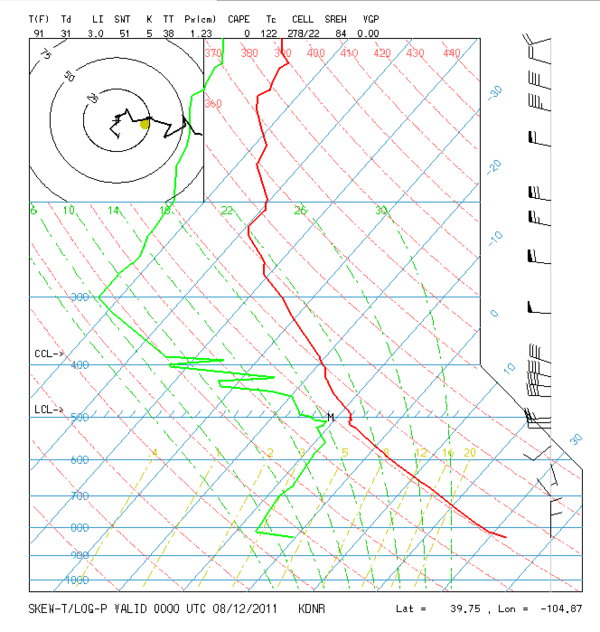
Above the dry surface layer, winds were generally from the west as speeds of 40 - 60 knots. Clouds present at these heights would thus have appreciable translation speeds. Any associated precipitation that descends into the dry surface layer would be subjected to evaporation; the resultant cooling and negative buoyancy would promote downward air motions. The combination of relatively fast echo motion and evaporatively-assisted downdrafts acted to enhance outflow velocities in the CHILL area on 11 August.
Reflectivity loop
|
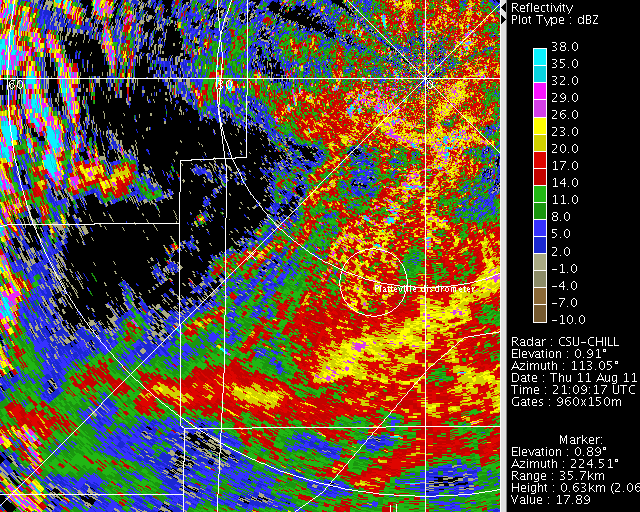
Click play to begin animation |
|
|
|
|
Differential reflectivity loop
|
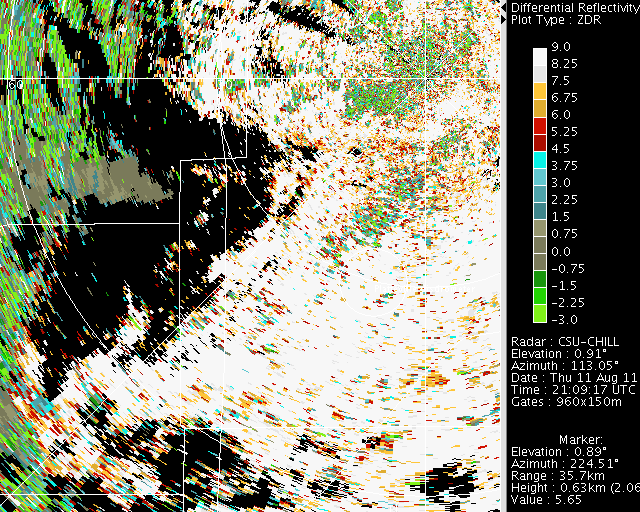
Click play to begin animation |
|
|
|
|
Radial vrlocity loop
|
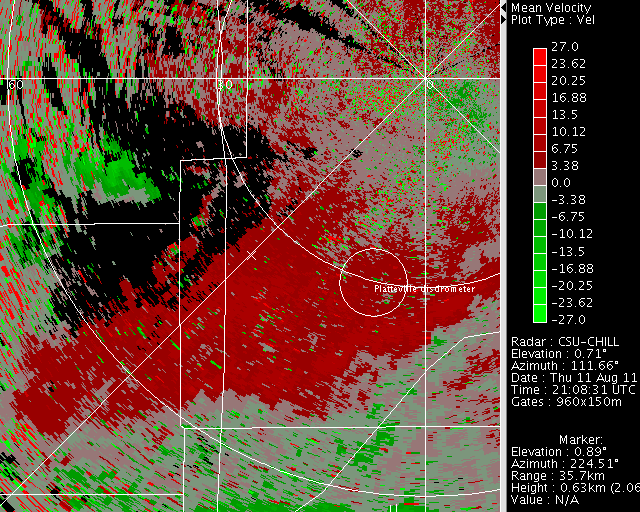
Click play to begin animation |
|
|
|
|
Digital image loop
Time lapse images: first=2126:12 UTC, last=2215:12 UTC, one minute interval between pictures. Dust / rain area enters view at approx 2150 UTC.
|
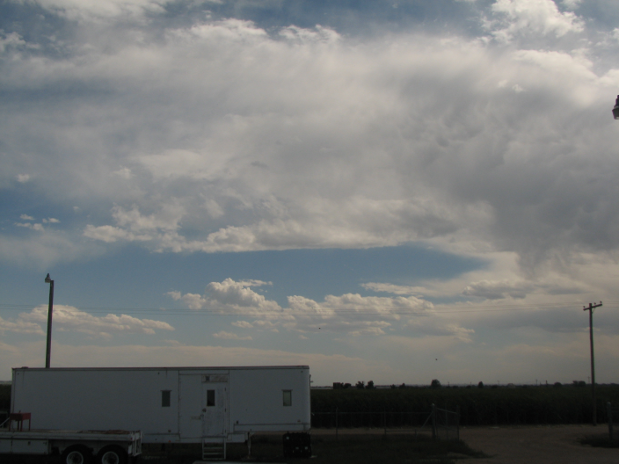
Click play to begin animation |
|
|
|
|




